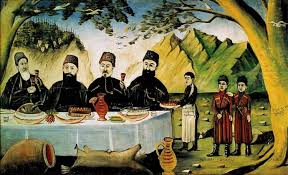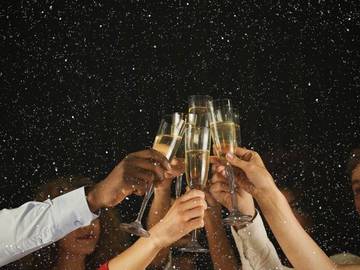The History of Toasting: Tracing the Origins of a Celebratory Tradition
Toasting, the act of raising a glass in honor of someone or something, has been a cherished ritual across cultures for centuries. Delve into the rich history of toasting with this comprehensive guide, exploring its origins, evolution, and cultural significance throughout the ages.
1. Ancient Origins
- Early Civilization: The tradition of toasting dates back to ancient civilizations such as the Greeks and Romans, who believed that clinking glasses together dispelled evil spirits and ensured a safe drinking experience.
- Libations and Offerings: Libations, the ritual pouring of liquid as an offering to gods or ancestors, were central to many ancient cultures and often involved raising a vessel in tribute.

the history of toasting
2. Medieval Europe
- Feudal Banquets: In medieval Europe, toasting became more formalized, with elaborate banquets featuring knights and nobles raising their goblets in honor of their hosts or guests.
- Chivalric Customs: Knights would often toast to their liege lords or their ladies fair as a display of loyalty and respect.
3. 16th to 18th Centuries
- Royal Courts and Nobility: Toasting flourished in royal courts and among the aristocracy during the Renaissance and Baroque periods, with elaborate ceremonies and toasts given in honor of monarchs and dignitaries.
- The Birth of Toasting Etiquette: Toasting etiquette, including the order of toasts and proper conduct during toasting, began to take shape, influencing social gatherings and formal events.
4. 19th Century to Present
- Victorian Era: The Victorian era saw the refinement of toasting customs, with elaborate toasting ceremonies becoming a staple of formal dinners and social occasions.
- Modern Times: Toasting remains a ubiquitous tradition in modern society, with variations across cultures and occasions, from weddings and birthdays to business meetings and casual get-togethers.
5. Cultural Significance
- Celebration and Camaraderie: Toasting serves as a symbol of celebration, camaraderie, and goodwill, bringing people together to share in joyful moments and commemorate special occasions.
- Expression of Respect and Gratitude: Toasting allows individuals to express respect, gratitude, and affection towards others, fostering bonds and strengthening relationships.

the history of toasting
6. Variations Around the World
- Cultural Customs: Different cultures have unique traditions surrounding toasting, from the "cheers" of English-speaking countries to the "kanpai" of Japan and the "santé" of France.
- Symbolism: While the gestures and words may vary, the underlying sentiment of toasting remains consistent: a gesture of goodwill and shared joy.
Conclusion
The history of toasting is a testament to the enduring significance of communal celebration and human connection. From ancient rituals to modern customs, toasting has evolved alongside society, yet its essence remains unchanged: a heartfelt expression of camaraderie, respect, and shared joy. Whether raising a glass at a formal dinner or a casual gathering with friends, toasting continues to unite people across cultures and generations, enriching life's most memorable moments with warmth and fellowship.